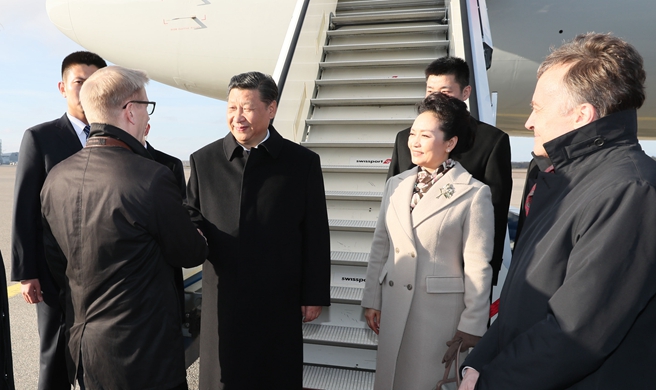BEIJING, April 5 (Xinhua) -- China has shown it is serious about addressing global climate change in recent decades, and has underscored that policies will not be affected by external changes.
Following are a selection of key facts and figures about China's achievements in cutting emissions, its international cooperation in recent years, and its commitments for the next few years:
ACHIEVEMENTS & COMMITMENTS
-- In the early 1980s, China put forward a development policy that "stress[ed] both energy development and conservation, while giving priority to conservation."
-- In the 1990s, "sustainable development" became a national strategy.
-- From 1981 to 2011, China's energy consumption experienced an annual growth of 5.82 percent, which helped sustain 10-percent annual growth of the economy.
-- In 2009, China announced it would cut its carbon emissions per unit of GDP by 40-45 percent from the 2005 levels by 2020.
-- From 2006 to 2011, energy consumption for every 10,000 yuan (about 1,451 U.S. dollars) of GDP dropped by 20.7 percent, saving energy equivalent to 710 million tonnes of standard coal.
-- By the end of 2011, non-fossil energy accounted for 8 percent of primary energy consumption, which meant an annual reduction of more than 600 million tonnes of carbon dioxide (CO2) emission.
-- In 2012, the 18th National Congress of the Communist Party of China included "ecological civilization," along with economic, political, cultural and social progress, on the country's overall development plan.
-- In 2014, China's energy consumption and emission of carbon dioxide per unit of GDP decreased by 29.9 percent and 33.8 percent respectively, compared to 2005 levels.
-- From 2010 to 2015, China's carbon dioxide emissions dropped by more than 17 percent, while energy consumption per unit of GDP was cut by 18.2 percent in the same period.
-- In June 2015, China submitted its Intended Nationally Determined Contributions (INDCs)to the United Nations Framework Convention on Climate Change, pledging to cut its carbon emissions per unit of GDP by 60-65 percent, raise the share of non-fossil fuels in primary energy consumption to about 20 percent and increase forest stock by around 4.5 billion cubic meters from the 2005 levels by 2030.
-- In September 2015, China unveiled its plan for implementing the 2030 Agenda for Sustainable Development.
-- In September 2016, China's legislature ratified the Paris Agreement on climate change, the third document to attempt to address climate change, following the 1992 United Nations Framework Convention on Climate Change and the 1997 Kyoto Protocol.
-- In December 2016, China launched a carbon dioxide monitoring satellite to record greenhouse gas levels.
-- China is expected to inaugurate an unified carbon trade market nationwide in July 2017 based on seven pilot programs that have been running since 2013.
INTERNATIONAL COOPERATION
-- Before the United Nations conference on climate change in Paris (COP21) in late 2015, China had already signed a series of bilateral statements on climate change with India, Brazil, the European Union (EU), the United States, France and others.
-- In September 2015, China and the United States issued a joint statement on climate change, following one announced in November 2014. The same month, Beijing announced the establishment of an independent South-South Cooperation fund of 20 billion yuan to help developing countries affected by global warming.
-- In November 2015, China and France jointly issued a statement on climate change, and the two countries agreed to have a five-year review process to assess and strengthen national commitments to be sure that there won't be more than 2 degrees of global warming by the end of the century.
-- In December 2015, China and 195 other parties to the Paris climate conference reached agreement on holding the average global temperature increase below 2 degrees Celsius above pre-industrial levels, and preferably below 1.5 degrees.
-- Since 2016, China has embarked on a project that aims to build ten pilot low-carbon demonstration zones, start 100 mitigation and adaptation programs in other developing countries and provide them with 1,000 training opportunities on climate change.


















